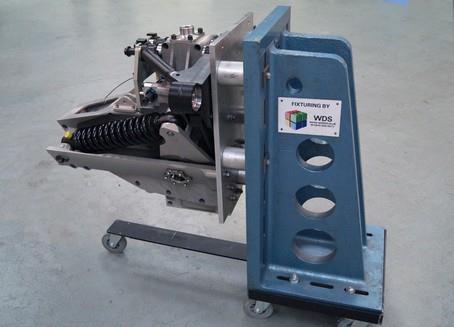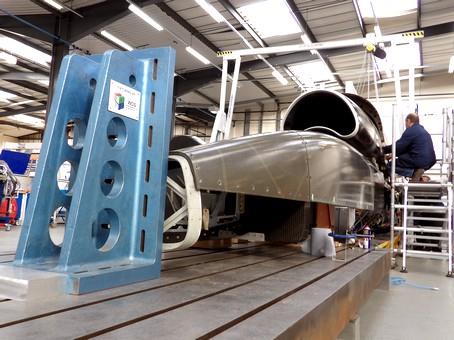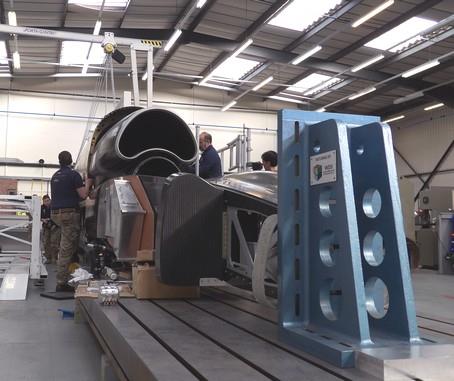During its supersonic trips down the desert, Bloodhound SSC’s suspension components will be expected to handle forces of up to 30 tonnes. In order to assemble the suspension to the accuracy of a few microns and therefore set up the entire car precisely, angle plates supplied by project sponsors, WDS Component Parts, have been used.
Bloodhound SSC, which was officially unveiled at the East Wintergarden in London's Canary Wharf in September, is one of the most ambitious engineering projects of the 21st century; its ultimate goal is one that many still think may be an impossible task. Ex-RAF pilot and current World Land Speed Record holder, Andy Green, aims to drive a 135,000 thrust HP, rocket and jet powered car at speeds exceeding 1,000 mph; breaking the speed of sound and smashing his existing record in the process. This will only be possible with the help of hundreds of engineers from many different fields playing their part.

The challenges facing the Bloodhound team are truly Herculean, pushing a 7.5 tonne car through the air at these speeds means pushing the boundaries of aerodynamic, materials and automotive engineering. During each timed run the front suspension alone will have to deal with a downforce of up to 11 tonnes, wheels spinning at 10,000rpm and the lateral forces created by side winds and steering input. It’s essential that every component in the car is perfectly balanced to keep it heading down the desert in a straight line.
With the suspension acting as a vital component to the success of the project, not to mention the safety of Andy Green, it was imperative that the Bloodhound engineers create a platform on which they can build up the assembly with absolute precision. One of the factors that made the process possible was an angle plate that was supplied to the team from WDS Component Parts, an official sponsor of the project.

Mark Elvin, Engineering Lead for Mechanical Design on the Bloodhound Project, commented: “When the project was still in its infancy WDS approached us and offered to provide support in the shape of fixturing equipment and components from their massive product catalogue. The success of the project relies upon such sponsorship, and WDS has a clear pedigree in producing similar parts for F1 teams and the aerospace industry, so we were very happy to accept the offer.
“WDS worked in consultation with us to design two angle plates which will be used during various stages of the car’s build, including the front suspension. The company was able to manufacture the parts in-house, giving us complete traceability and the quality of the finished product has helped us to keep to our tight schedule.”
Phil Holyome, WDS sales engineer, added: “WDS provided sponsorship to the Thrust SSC project – Andy Green’s last successful record attempt. When we heard that he was setting up to break his own record it seemed only fitting that we offer to provide support once again. As a British company we are extremely proud to be playing a small part in keeping a British name on what has to be considered as one of the most enthralling world records of them all.”

The bespoke built angle plates were manufactured by WDS for use as assembly jigs for the front and rear suspension to ensure that the vehicle is constructed with absolute precision. WDS used its in-house facilities to cast and machine the angle plates with accuracy of up to 5µm to the meter.
Accuracy was extremely important throughout this project as the angle plates act as a datum point for the chassis build. Cast iron was used to create the angle plates because its stability meant that it would not flex or expand in the event of temperature fluctuations, which would in turn affect the overall performance of the car. Once the work was complete, the parts were supplied with a certificate of conformity to confirm that they met with the signed-off design.
Readers can glean more from the U-tube video link describing Bloodhound's construction.










